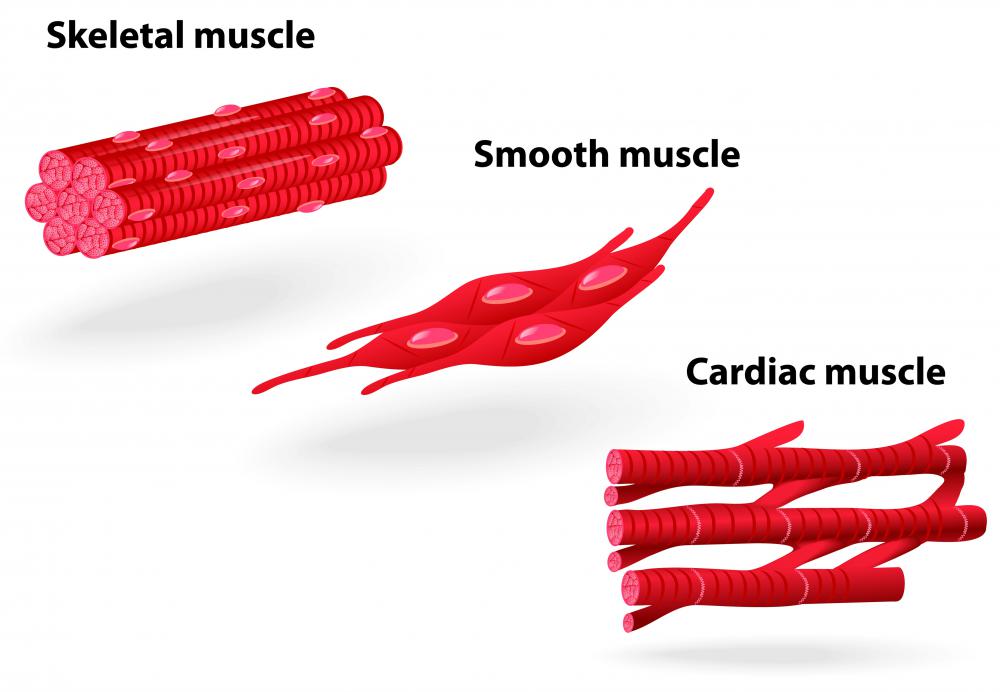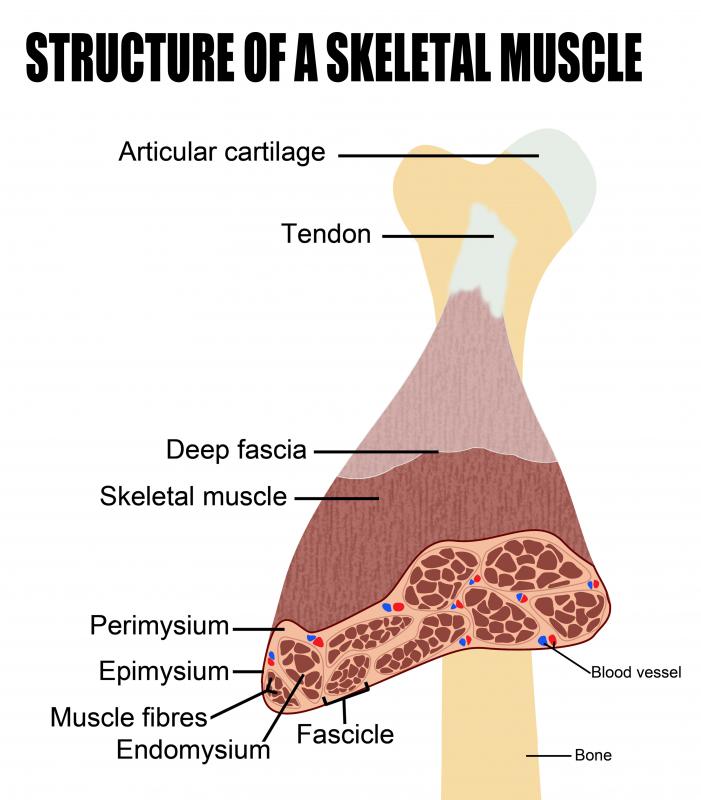At TheHealthBoard, we're committed to delivering accurate, trustworthy information. Our expert-authored content is rigorously fact-checked and sourced from credible authorities. Discover how we uphold the highest standards in providing you with reliable knowledge.
What is the Anatomy of the Muscles?
“Anatomy of the muscles” refers to the study of the structure of muscles and muscle systems. Such study falls under the broad umbrella of human anatomy, and it is often undertaken in conjunction with the study of the physiology of the muscles. A true knowledge of the anatomy of the muscles requires the ability not only to name each muscle, but also to identify each muscle’s point of origin, course, and point of insertion.
Muscle anatomy is often a jumping-off point for a basic understanding of the way the body works, and how the actions of different muscles affect various bodily functions. Muscle anatomy plays an important role in many scientific disciplines. Medicine and kinesiology, for example, rely heavily on an understanding of muscles and muscle systems.

All muscles have a point of origin, a course, and a point of insertion. The point of origin is the point of connection with the skeletal system, where the least amount of movement takes place. The course of a muscle is the path that the muscle takes from the point of origin to the point of insertion with the skeletal system. The point of insertion is the connection point, where movement of the muscle, and subsequent movement of the skeletal system, occurs.

Muscles are part of the musculoskeletal system, which consists of the skeleton and the muscles. The musculoskeletal system provides humans with the ability to move. The skeleton acts as a solid, movable framework that supports the body, while the muscles provide the pulling force for movement. Experts disagree on the exact count of the number of muscles in the body, but it is widely accepted that the body contains upward of 640 muscles.

Categories of muscles, such as smooth, striated, and cardiac, are often included in the study of the anatomy of the muscles. Striated muscles, also referred to as voluntary or skeletal muscles, are used in voluntary bodily movements. Smooth muscles, alternatively referred to as involuntary of visceral muscles, are used in involuntary movements such as digestion. Cardiac muscles serve the heart and are the main force that pumps blood throughout the body.

Closely related to the anatomy of the muscles is the physiology of the muscles, which pertains to the functions of the muscles. Respiration, digestion, and ambulation are all bodily functions that incorporate the actions of muscles. In muscle physiology, muscles are categorized either as agonist, antagonist, or synergist. Agonists are muscles that move a structure. Antagonists are muscles that oppose movement of a structure. Synergists are muscles that stabilize structures.
AS FEATURED ON:
AS FEATURED ON:














Discuss this Article
Post your comments